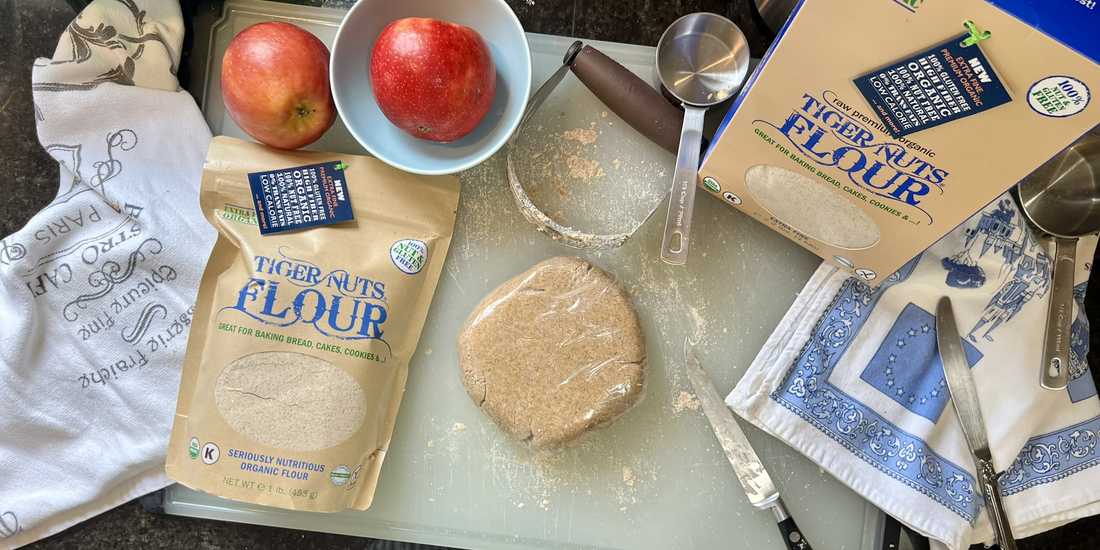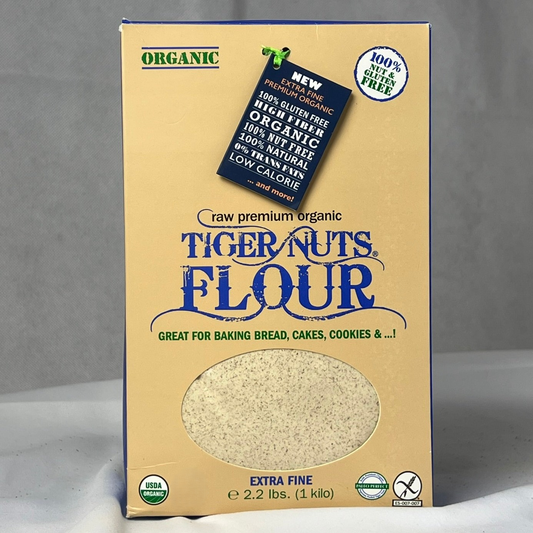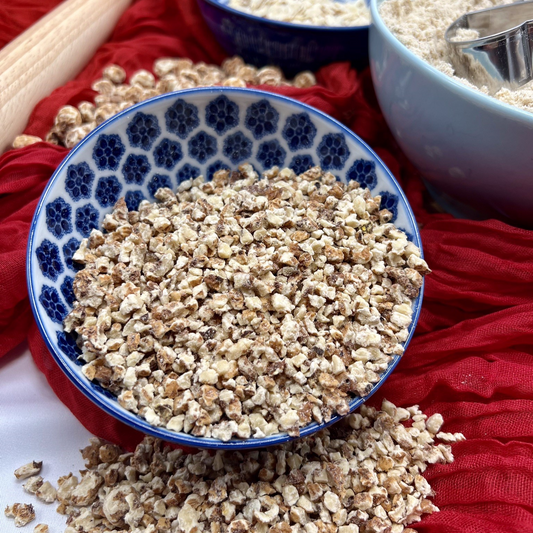If you're new to Tiger Nuts Flour and aren't sure how to make the switch from all-purpose flour, you're in the right place. The unique flavor of Tiger Nuts Flour paired with its exceptional nutritional benefits (nut-free, gluten-free, grain-free and paleo to name a few) make it a great choice for baking and for no-bake and plant-based recipes. As you experiment with your recipes, it’s important to take into account some distinct characteristics and make the necessary adjustments for texture, moisture, and baking temperature. Here are a few things you need to know to get started:
1. Measuring Tiger Nuts Flour: Tiger Nuts Flour is denser and slightly heavier than all-purpose flour. To accurately measure it, use the spoon-and-level method. Gently spoon the flour into the measuring cup without packing it down, then level it off with a flat edge. This ensures you don't end up with too much flour in your recipe.
2. Texture Adjustment: Tiger Nuts Flour has a unique texture compared to all-purpose flour. Our flour is finely ground but can still feel slightly gritty due to the natural fibers in Tiger Nuts. To enhance the texture of your baked goods, consider sifting Tiger Nuts Flour before adding it to your recipe. Sifting helps break down any lumps and ensures a smoother consistency.
3. Moisture Content: Tiger Nuts Flour is known for its ability to absorb moisture. When baking with it, you may need to adjust the moisture content in your recipe. Start by reducing the liquid content slightly, as Tiger Nuts Flour can make your batter or dough thicker. Gradually add back liquid as needed to achieve the desired consistency. It's a good practice to begin with a 25% reduction in liquid and make adjustments from there.
4. Baking Temperature and Time: Tiger Nuts Flour tends to brown quicker than all-purpose flour due to its natural oils. To prevent over-browning, consider reducing your baking temperature by 25°F (about 14°C). This adjustment will allow your baked goods to cook evenly without becoming too dark on the outside. Keep a close eye on your oven and use a toothpick or cake tester to check for doneness.
5. Flavor Enhancement: Tiger Nuts Flour has a subtly sweet and nutty flavor. Make the most of this unique taste by incorporating complementary flavors in your recipes. Consider using spices like cinnamon, vanilla, or nutmeg to enhance the overall flavor profile.
Note: For some recipes, especially those requiring a lighter texture, you can combine Tiger Nuts Flour with other flours like almond flour, coconut flour, or tapioca flour. Experiment with different ratios to achieve the desired texture and taste.
Baking with Tiger Nuts Flour can be a rewarding experience once you understand its distinct characteristics and make the necessary adjustments. Don't be afraid to experiment and enjoy the benefits of this versatile and wholesome flour. Explore the Tiger Nuts USA website for more tips and Tiger Nuts Flour recipes.









